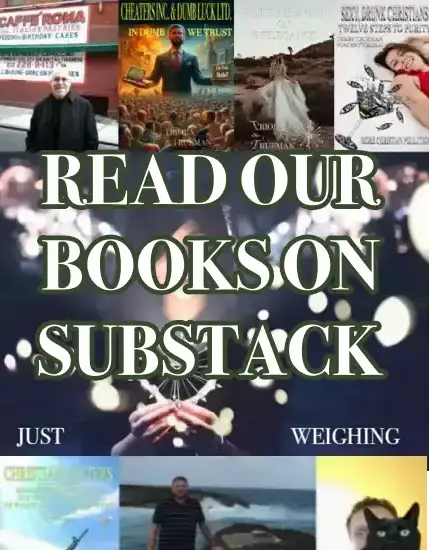How Learning Rhythm & Rhyme Improves Free Verse
Poetry likens much to Michaelangelo’s view that freeing the angel requires marble chiseled away. Too often, poets don’t learn to sculpt verse with rhyme or meter, mainly because of poetry’s improper teaching, if taught at all, causing free verse’s overuse or simplistic rhymes lacking polish. Worse than a lack of style, these poems have not undergone a rigorous construction process that elucidates meaning, which holds profound implications for free verse writers.
While absolutely capable of bearing strong meaning, free verse often lacks weight in the absence of rhyme and meter challenges. Consider for a moment that free verse might actually be more difficult to write than metered or rhyming poetry. In Making Free Verse Poetry Engaging, I discussed how engaging free verse uses a variety of devices to create rhythm and mimic a metrical quality. A free verse like Harlem by Langston Hughes reflects how the words and their arrangement create emphasis and cadence even when rhyme is inconsistent:
What happens to a dream deferred?
Does it dry up
like a raisin in the sun?
Or fester like a sore —
And then run?
Or nonexistent, as in the case of In the Desert by Stephen Crane, which uses short lines to dramatically emphasize human nature’s darkness.
In the desert
I saw a creature, naked, bestial,
Who, squatting upon the ground,
Held his heart in his hands,
And ate of it.
I said, “Is it good, friend?”
“It is bitter—bitter,” he answered;
“But I like it
“Because it is bitter,
“And because it is my heart.”
Strictly writing free verse, without consideration for the many devices that make this form engaging, may make rhyme and meter elements challenging to implement, having routinized formatting like line splitting for emphasis rather than constructing phrases for a particular meaning. Believing learning these devices also complicates when studying hard and soft sound metrical arrangements, I suggest creating mosaic rhymes to ease into this understanding.
Mosaic Poetry
Mosaic poetry defines as multisyllabic rhyming in which each syllable rhymes, such as per-form-ing and re-form-ing. This type of rhyme often appears as an end rhyme (line’s final word rhyming) for comedic effects such as,
Your home so warmly in-vit-ed
But for the cold corpse di-vid-ed
On the plates your mom pro-vid-ed
Though commonly defined this way, mosaics are not limited to comedy or end rhymes. When applied to the entire poem, they also provide a means of learning meter and developing a better ear for rhyming. To design poetry mosaically, you write as you normally would and then rhyme the syllables. In this example from The Tiny Actress, I began with a scene from a daily activity that struck me profoundly,
The tiny actress getting mail today
Star to be, A-list making debut pray
Don’t let this finished example deter you because it is imperfect, as seen in the rhyming syllables bolded alongside those not, and for the effort needed to polish lines in this way.
The / tī / nē / ak / trəs / get / ting / mail / to / day
Star /to /be / ā / list / ma / king / dā / byo͞o / pray
You should write what inspires you without attempting the mosaic pattern, then return to each line to rhyme them syllabically, evolving as such,
1.
You can write any way you want
In this way, you can flaunt
2.
You write any way you want
In the many, you can flaunt
3.
You write any way you want
True light you will flaunt
4.
Do write the way you want
True light’s inlay to flaunt
To match every syllable proves impossible, except in the shortest lines, like the cat and a rat. The difficulty rhyming words syllabically make mosaic rhymes beneficial for learning since you will expand your vocabulary and gain awareness of sounds. Most importantly, you utilize broken rhyme that marries syllables from different words, i.e., the way and inlay. By nature of the mosaic, you will use end rhyming and beginning rhymes, i.e., you and true and want and flaunt from the example above.
As you work with mosaics, you become adept at metrical writing because you hear the sounds of words that fit together more effectively when spoken. This practice gives rise to more complex poetry layered with refined meaning as you learn to incorporate other methods into your own. In She Can Wade in a Drop of Dew, I mimic Edgar Allan Poe’s The Raven for effect and meaning to describe several ideas with rhyme,
Starting music class, chiming kids, wooden fluting, drumming bash,
defying score perfecting, but for one Hour above the roar.
Lyrics ring softly, muting in her golden strumming strongly,
the singing bard directing what becomes one’s Hours ever scored,
and lyrics,
Seeing in those days gone by
Carefree singing my goodbye
“Wading in a drop of dew”…
Learning to write mosaics expands your poetry skills when forced to use a variety of devices to structure ideas. Ultimately, all poetry writing improves, including free verse, since you understand how to manipulate form and sound to engage readers.
Photo by Álvaro Serrano on Unsplash





